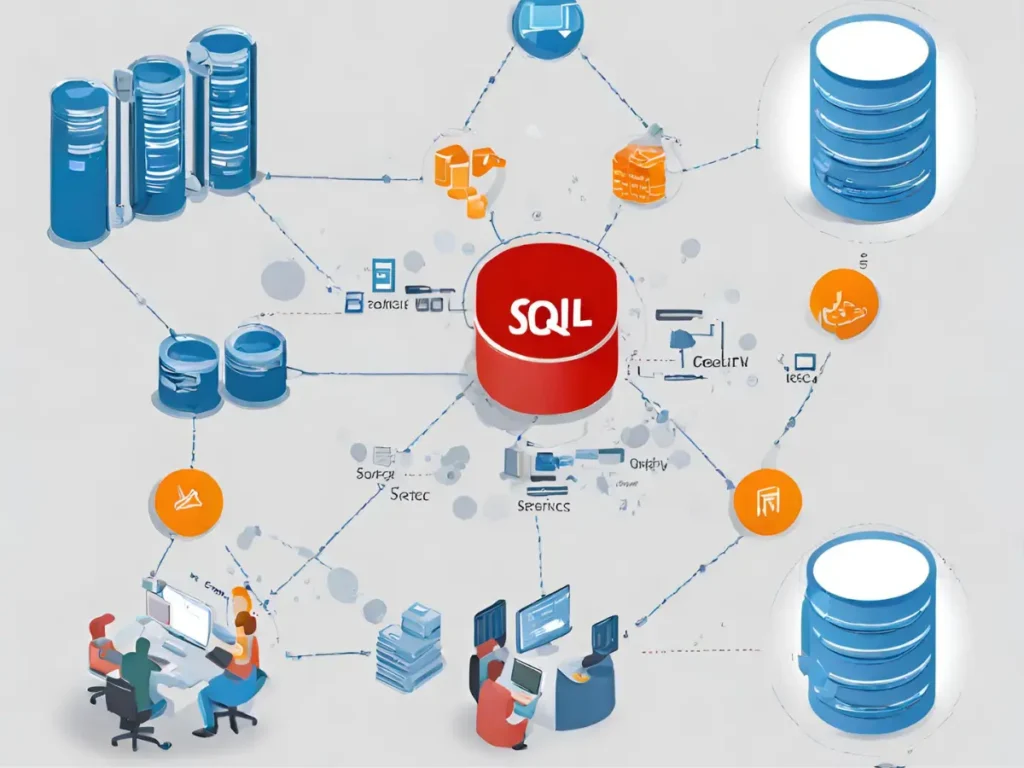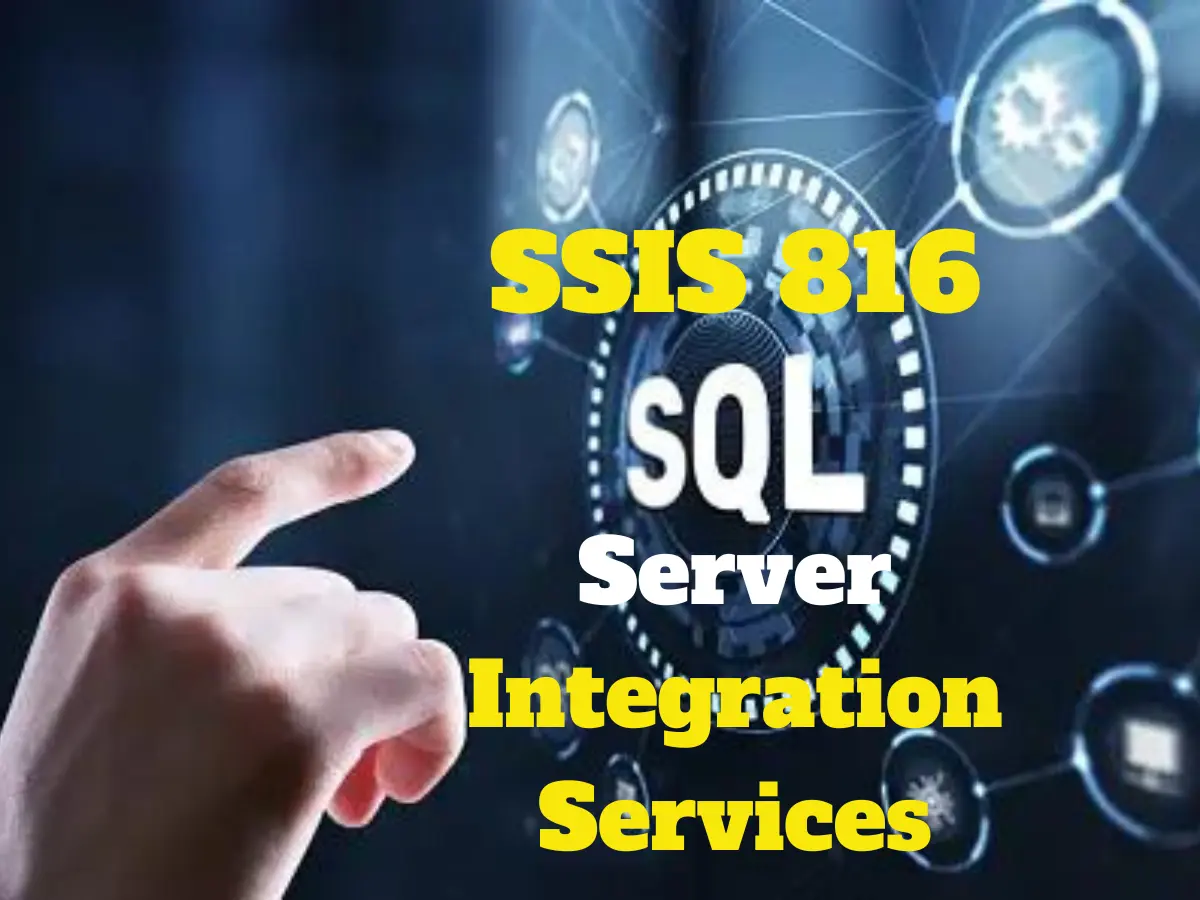What is SSIS?
SSIS (SQL Server Integration Services) is a Microsoft-developed tool that helps businesses or organizations manage and move their data from one place to another. SSIS allows users to create, manage, and execute data integration and transformation workflows. These workflows can connect to various data sources, like databases or files, transform the data into the desired format, and then load it into target destinations.
History of SSIS 816?
SQL Server Integration Services (SSIS) has its roots in the previous Data Transformation Services (DTS), which were first introduced with SQL Server 7.0. DTS provided basic ETL capabilities, allowing users to define data transformation and speed operations. With the release of SQL Server 2005, Microsoft introduced SSIS as a major DTS enhancement. SSIS brought improvements in flexible and extensible configuration, improved data transformation capabilities, improved debugging and error handling, and redesigned the user interface. It became an integral part of the SQL Server suite, empowering organizations to integrate their data processes have been simplified, and complex business processes have been successfully executed.
Why SSIS 816 is Needed in the Modern World?
The importance of SSIS lies in its ability to meet today’s increasing business requirements for complex data integration solutions. In today’s data-driven environment, organizations are dealing with large amounts of data from various sources. SSIS plays a key role in facilitating seamless data flow between systems, ensuring data quality, and providing business intelligence and effective reporting. SSIS empowers administrators to make informed decisions by providing a platform for integrating, organizing, and manipulating data in a system that supports meaningful analysis. As a result, SSIS has become an essential tool for companies looking to leverage their full data capabilities for strategic decision-making and operational efficiencies.
What is SSIS 816 used for?

SQL Server Integration Services (SSIS) is like a superhero for moving data around! Imagine you have data in different places, and you want to bring it all together or move it somewhere else – that’s where SSIS comes in. It’s like a handy tool that helps you mix, clean, and organize your data.
1- Data Loading (Bulk Data):
One of the main purposes of SSIS is to facilitate efficient loading of large amounts of data. It supports multiple data imports from a variety of sources, including Excel files, relational databases, and other data stores. SSIS provides unique features such as the Data Flow Task, which allows users to define data extraction, transformation, and loading processes. Bulk data loading is critical for populating data warehouses, data marts, and other analytic systems.
2- Data Archiving:
While not explicitly designed for data collection, SSIS can be used to run ETL programs that support data storage. For example, organizations can use SSIS packages to extract historical data from a production database, apply necessary changes, and insert it into an archive database. By creating such a workflow, companies can currently customize production databases and keep a historical record of their data.
3- Data Loading:
It may seem like a lot of repetition in the processes, but it’s worth emphasizing that data entry is indeed one of the core functions of SSIS. Enables users to move data from different locations to different locations, whether within the same database, different databases, or even different data stores Provides a visual-design interface for SSIS. Creating packages, making them accessible to users with varying levels of technical expertise.
4- Data Cleaning and Mining:
SSIS includes a variety of transformations that can be applied to data during the ETL process, making it suitable for data-cleaning tasks. These transformations can involve tasks such as data type conversions, data cleansing, and error handling. While SSIS is not a dedicated data mining tool, it can play a role in the data preparation phase for data mining activities. Clean and well-organized data is crucial for accurate and meaningful data mining results.
Feature of SSIS Packages for Data Movement and Transformation:
SQL Server Integration Services (SSIS) packages are like super-smart containers that hold the magic spells for moving, transforming, and managing your data in the Microsoft SQL Server world. Let’s break down the awesomeness of SSIS packages:
1. Data Flow Magic:
SSIS packages are wizards for data movement. They can seamlessly extract data from various sources, whether it’s a database, a spreadsheet, or even a text file. The magic really happens in the data flow, where you can transform and shape the data like a skilled sorcerer, making it ready for its next destination.
2. Drag-and-Drop Design:
Creating SSIS packages is like playing with building blocks. The design interface allows you to drag and drop components onto a canvas, connecting them to create a flow that dictates how your data will be manipulated. This visual design approach makes it accessible to both wizards and apprentices alike.
3. Control Flow:
SSIS packages are not just about data movement; they also excel at choreographing the dance of your data. The control flow lets you define the sequence and conditions for tasks and operations within the package. It’s like orchestrating a symphony where each note (task) plays at the right time.
4. Connection Managers:
The Connection Managers in SSIS packages are like passports for your data. They hold the keys to connecting with different data sources and destinations. With these, you can seamlessly travel between databases, files, and even cloud realms, ensuring your data finds its way home.
5. Scripting and Expressions:
For those who want to sprinkle some custom magic, SSIS supports scripting and expressions. You can write scripts in languages like C# or use expressions to dynamically set values. This is where you can add your own enchantments to the data transformation process.
6. Error Handling Spells:
Even in the world of data, things may not always go as planned. SSIS packages come equipped with error-handling mechanisms. You can cast spells to gracefully handle errors, log information about the mishaps, and ensure your data journey continues with resilience.
7. Deployment Potions:
Once your SSIS package is crafted and tested, you can package it up and deploy it to different SQL Server environments. This deployment magic ensures that your data spells work consistently from your development cauldron to the production stage.
Guide to Creating an SSIS 816 Package: Unveiling the Power of Data Integration
Embarking on the creation of a SQL Server Integration Services (SSIS) package opens up a realm of possibilities for seamless data integration. Let’s navigate through the essential steps to craft your SSIS package masterpiece:
1. Create a SSIS Project:
Begin your journey by crafting a dedicated SSIS project within the SQL Server Data Tools (SSDT). This serves as your canvas, providing a structured space to bring your data integration vision to life. Initiate a new project, providing it with a meaningful name and location, setting the stage for your data orchestration adventure.
2. Adding Tasks to the Project:
Once inside your project, the Control Flow becomes your artistic platform. Here, you add tasks to create a choreography of data operations. It’s akin to selecting instruments for a musical ensemble, each task contributing to the rhythm and flow of your data symphony. Whether it’s executing SQL commands, managing files, or orchestrating data movement, the Control Flow lets you compose the perfect arrangement.
3. Create a New Connection Manager:
To establish seamless communication between your project and various data sources, conjure the power of the Connection Manager. Craft new connections effortlessly, linking your project to databases, files, or even cloud-based storage. Configure the connection properties, ensuring a secure and reliable channel for your data to traverse. The Connection Manager is the bridge that ties your project to the rich tapestry of data sources.
4. Adding Data Flow Tasks:
Now, let’s dive into the heart of your data orchestration – the Data Flow Tasks. These tasks enable the extraction, transformation, and loading (ETL) of your data. With an intuitive drag-and-drop interface, design the path your data will take. Extract insights from databases, transform them as needed, and elegantly load them into their designated destinations. It’s a creative process of sculpting your data into a cohesive narrative, ensuring it flows seamlessly through your integration masterpiece.
Importance of SSIS 816 package:
The significance of SSIS packages in the realm of data integration is underscored by their role in orchestrating the movement and transformation of data. Within the context of SSIS packages, monitoring specific metrics such as “Rows read,” “Buffers in use,” and “Buffers spooled” becomes essential for gauging and optimizing performance.
- Rows read is a fundamental metric, representing the total number of rows extracted from source components during the execution of an SSIS package. This metric serves as a key indicator of data retrieval efficiency, allowing users to identify patterns, spikes, or potential areas for optimization. Anomalies in rows read can prompt further investigation into the conditions of source data or the design of the SSIS package.
- The metric “Buffers in use” provides insights into the active utilization of memory buffers within the SSIS data flow. Efficient memory usage is crucial for optimal performance, and monitoring this metric helps assess how effectively available memory resources are being employed. High buffer usage signals efficient memory utilization, while lower usage may prompt a closer examination of the data flow for potential optimizations.
- Buffers spooled refers to the temporary storage of buffers on disk when there is insufficient memory. This mechanism enables the handling of large datasets, yet excessive spooling can impact overall performance. Monitoring “Buffers spooled” helps identify situations where the system heavily relies on disk storage, offering insights into potential adjustments for memory utilization or optimization opportunities within the data flow.
Conclusions:
In conclusion, SSIS 816 stands as a powerful and dynamic data transformation tool, playing a pivotal role in the realm of data integration. With its robust capabilities, SSIS 816 empowers users to seamlessly extract, transform, and load data from various sources to destinations. The tool’s versatility shines through in its ability to handle bulk data loading, data archiving, cleaning, and mining tasks. Its intuitive interface, coupled with a rich set of features, allows both seasoned professionals and novices to craft intricate ETL workflows with precision. As organizations navigate the ever-evolving landscape of data, SSIS 816 emerges as a valuable asset, facilitating efficient and effective data transformations to meet the demands of modern data-driven environments.
Frequently Asked Questions:
1. What distinguishes SSIS 816 from previous versions of SQL Server Integration Services (SSIS)?
SSIS 816 introduces several enhancements and improvements over its predecessors. These may include performance optimizations, additional connectors, and new features to streamline data transformation processes. It is advisable to refer to the release notes or documentation for a detailed list of specific upgrades and advancements.
2. How does SSIS 816 facilitate data cleaning and mining tasks?
SSIS 816 provides a comprehensive suite of data transformation tools that allow users to cleanse and mine data effectively. Through its intuitive interface, users can leverage various transformations to clean, filter, and manipulate data. Additionally, SSIS 816 supports the integration of external data mining tools, enhancing its capabilities in extracting valuable insights from datasets.
3. Can SSIS 816 handle real-time data integration tasks efficiently?
While SSIS is renowned for its batch-oriented ETL capabilities, SSIS 816 may include features or improvements geared toward real-time data integration. Depending on the specific requirements, users should explore the tool’s capabilities in handling streaming data and assess its suitability for real-time scenarios, taking advantage of any new features introduced in this version.

